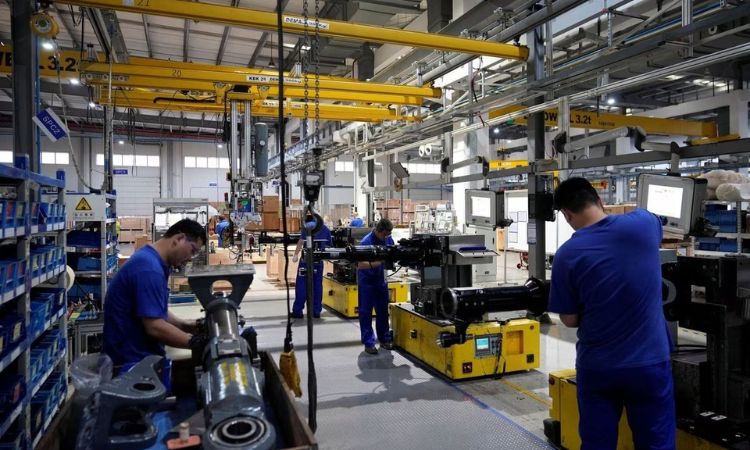China’s services sector experienced a pick-up in activity during May, according to a private-sector survey released on Monday. The Caixin/S&P Global services purchasing managers’ index (PMI) rose to 57.1 in May, up from 56.4 in April. This expansion in the services sector supports China’s consumption-led economic recovery in the second quarter. The survey’s findings differ from the official PMI, which was made public last week and showed a slower rate of increase in the services sector.

The Second Stage of China’s Consumption Recovery
Analysts from Morgan Stanley noted that China’s consumption recovery, following a sharp but unbalanced rebound in the first quarter of 2023, is now entering its second stage. This phase is expected to be more endogenous and driven by broader job gains. The growth in new orders reported by service companies in the Caixin survey suggests that the first May Day holiday, which occurred after China’s COVID reopening, boosted demand for in-person services such as hotels, restaurants, and travel agencies.
Differences in Survey Size
Bruce Pang, the chief economist at Jones Lang LaSalle, suggested that the discrepancy between the Caixin and official PMI readings could be attributed to the difference in survey sizes. The Caixin PMI surveys around 650 private and state-owned services companies, while the official PMI surveys 4,300 companies.
Concerns of Fading Pent-up Demand
Some economists have expressed concerns that pent-up demand for in-person services may fade due to slowing income growth and rising unemployment. This would pose challenges for policymakers who are already grappling with weak foreign demand and an uneven post-COVID recovery.
Key Findings from the Caixin PMI Survey
The Caixin survey revealed several noteworthy findings. Firstly, service companies reported a rise in new business in May, driven by increased workloads resulting from the May Day holiday. Secondly, while job creation continued for the fourth consecutive month, the pace of hiring slowed. Additionally, average prices charged by service companies increased at the fastest rate since February 2022. The survey also indicated that capacity pressures persisted, as highlighted by sustained growth in outstanding business.
Composite PMI Indicates Overall Expansion
The manufacturing and services component of the Caixin/S&P composite PMI increased from 53.6 in April to 55.6 in May. This marks the most rapid expansion since December 2020. While firms in the services sector expressed optimism about future business prospects, the level of optimism eased to the lowest point since December 2022 when Beijing lifted anti-virus restrictions.
China’s Economic Recovery and Challenges
China’s economy rebounded faster than expected in the first quarter but faced a loss of momentum at the beginning of the second quarter, with April data falling below forecasts. Factory activity in May also declined at a faster rate than anticipated, indicating a continued unbalanced recovery. Wang Zhe, a senior economist at Caixin Insight Group, emphasized the strength of the services sector compared to manufacturing in the Chinese economy. This divergence underscores the need to boost and restore demand in order to drive sustainable economic growth.
Conclusion
The Caixin PMI survey for May reveals a positive growth trajectory for China’s services sector, which supports the consumption-led economic recovery. The expansion in new orders and increased workloads indicate a rebound in demand for in-person services. However, economists remain cautious about the sustainability of this recovery, citing challenges such as slowing income growth and rising unemployment. Policymakers will need to address these issues while focusing on restoring and expanding domestic demand to ensure a more balanced and confident economic outlook for China.














